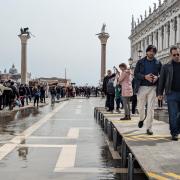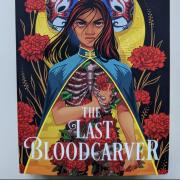
According to a World Bank report, Afro-Latinos are 2.5 times more likely to live in chronic poverty than whites or mestizos.
Often when we think about the Trans-Atlantic slave trade we focus on the enslaved Africans who were brought to North America and the Carribean. Often, we forget or are not aware that a large proportion of enslaved Africans were taken to Lain America. In fact, only about 6% of all enslaved Africans shipped across the Atlantic were taken to North America; with the remaining percentage transported to Latin America and the Carribean. Brazil received approximately 4.86 million enslaved Africans alone and has the highest black population outside of Africa today! Even more surprisingly, the black population in Latin America is significantly larger than in the US. So why is there still so little representation of Afro-Latinos in the media today?
Unfortunately, due to the colonial legacy left behind by slavery, people of African descent living in Latin America still face discrimination and social and economic inequality today . On average, white brazilians earn almost double what black Brazilians earn. In addition, police brutality in Latin America against the black community is rife. For example, more people were killed by police in Rio de Janeiro state than in the whole of America in 2020. Of all those killed, 75% were black. On May 19th 2020 Anderson Arboleda, an Afro-Colombian 19 year old man was allegedly beaten outside his home by police for allegedly breaking quarantine rules. Sadly, he died from his injuries on 20th May 2020 at Valle del Lili clinic in Cali after being pronounced brain dead.
Afro- Latinos have made great contributions to Latin American culture today, notably in music. For example, merengue, cajón, samba, candombe, punta and reggaetón. Furthermore, many culinary dishes in Latin America also have their origins in Africa such as:, mofongo, mogo mogo, Rondón ,Vatapá , tacu tacu, tapado, quimbombo and many more! Moreover, movements styles and African musical rhythms have largely influenced popular Latin American dances i.e: bomba,samba and palos etc. However, despite Afro latinos array of contributions to Latin American culture over time their contributions often go overlooked, and unnoticed.
Moreover, often the latinos who are represented on television and in the media are often of lighter complexion with Afro-Latinx actors and characters frequently left out. This is due to eurocentric beauty standards which are widely held across Latin America. Even when Afro-Latinos do get roles on Latin television they are often subjected to playing racial stereotypes. Amara la Negra, an Afro-Latina singer, actress, dancer, author, and television host has often spoken up about the lack of visibility of Afro-Latinos in the media. In an interview in 2018 Amara La Negra stated "Being an Afro-Latina in the Latin market is particularly difficult because you essentially have to work twice as hard to prove yourself. As much as people want to say that racism is over and it doesn’t exist, it does, especially in the Latin market. When they talk about a Latina, they talk about Sofia Vergara or Jennifer Lopez, Shakira even. But not anyone who looks like me, and I’m 100 percent, Latina."
However things are slowly but surely changing. In 2019 Jharrel Jerome became the first Afro-Latino to win an Emmy for acting. Also, in 2019 Gina Torres, an Afro-Cuban born in the US, was the first Afro-Latina to create, produce and star in her own show Pearson . However, there is still a long way to go especially within Latin American media . It is clear that Afro-Latinos need to be more visible in the media and have their stories heard.



























